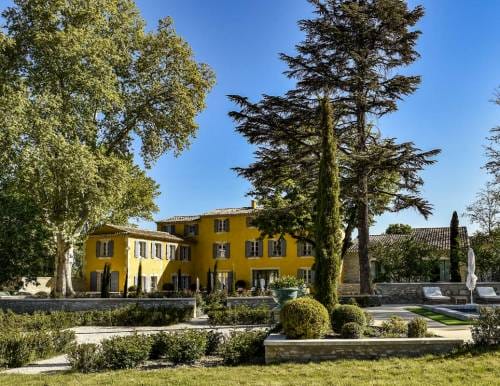Mythology and transformed sexuality in the life and work of Jean Cocteau
Eyebrows furrowed with anger, piercing gazes, passionately closed lips, graceful silhouettes — it is impossible to look away from these faces and bodies. These are characters of Ancient Greek myths and biblical stories, the heralds of eternal youth and examples of human fortitude, depicted by the great Jean Cocteau as symbols of unstoppable, destructive passion. They are immortalized on the walls of Santo Sospir where Jean, invited by Francine Weisweiller, the widowed owner of the villa, lived intermittently during eleven years: from 1950 to 1961.
Francine was separated from her husband long before his death, although he never gave her a divorce. The villa Santo Sospir was his gift to Francine, his fulfilled promise to give her a «dream house». Sailing along Cap Ferrat, they saw this mansion; and a few years later, here she was, alone with that same view of the endless blue sea, the mountains of the Côte d’Azur and Jean Cocteau walking around the villa, stained with paints…
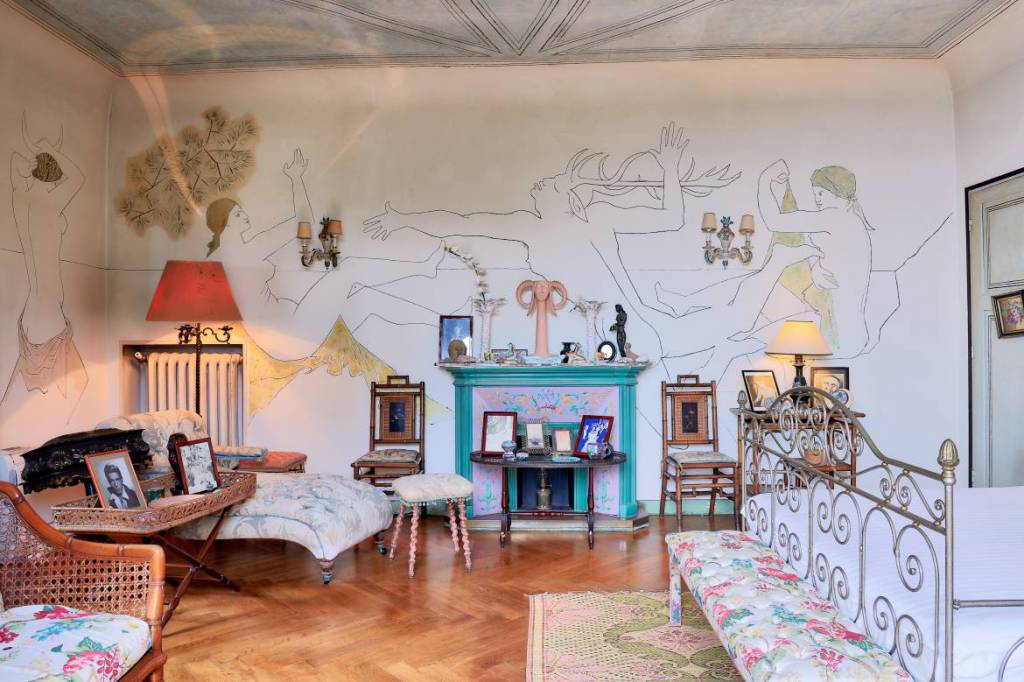
Apparently, it is not by chance that Jean Cocteau, the very incarnation of the artist of the early 20th century, was born during World Expo, held in Paris from May to October 1889 and well-timed with the centenary of the Fall of the Bastille. Meanwhile, the fortress of rigid ideas about art and music was stormed in the early 1910–20s by a whole bunch of artists of a new era from many different countries around the globe.
«Surprise us!» — Sergei Diaghilev asked during his first meeting with Cocteau in 1912 at the Russian Seasons in Paris, while the audience had already been disquieted by the unbridled chaos of the «Rite of Spring» by Stravinsky. Jean Cocteau indeed surprised. The gory legends of the past, harmless in the darkness of denial — «nothing but nothing, and our goal is nothing, nothing, nothing» (Dada slogan) — for many years fed on the cynicism of wartime. And then suddenly, after a long winter of indifference, Cocteau revived the walls of the «dream house» with graphic comments on his relationship with beloved women, men and youths. Jean Cocteau stood his ground firmly against Madeleine Castaing, designer commissioned by Francine to furnish and decorate the villa. Jean challenges the fashion artist and turns the white walls into a song of love, presenting his life on a snow-white cloud of feelings, which he soon confesses to the mistress of the house. He lived his life always looking ahead (here’s his «Jean Cocteau s’adresse … à l’an 2000», the message from Jean Cocteau to the people of 2000) and also looking back (the black and white experimental tape «The Testament of Orpheus», in which Jean-Orpheus tries to regain inspiration and creativity).
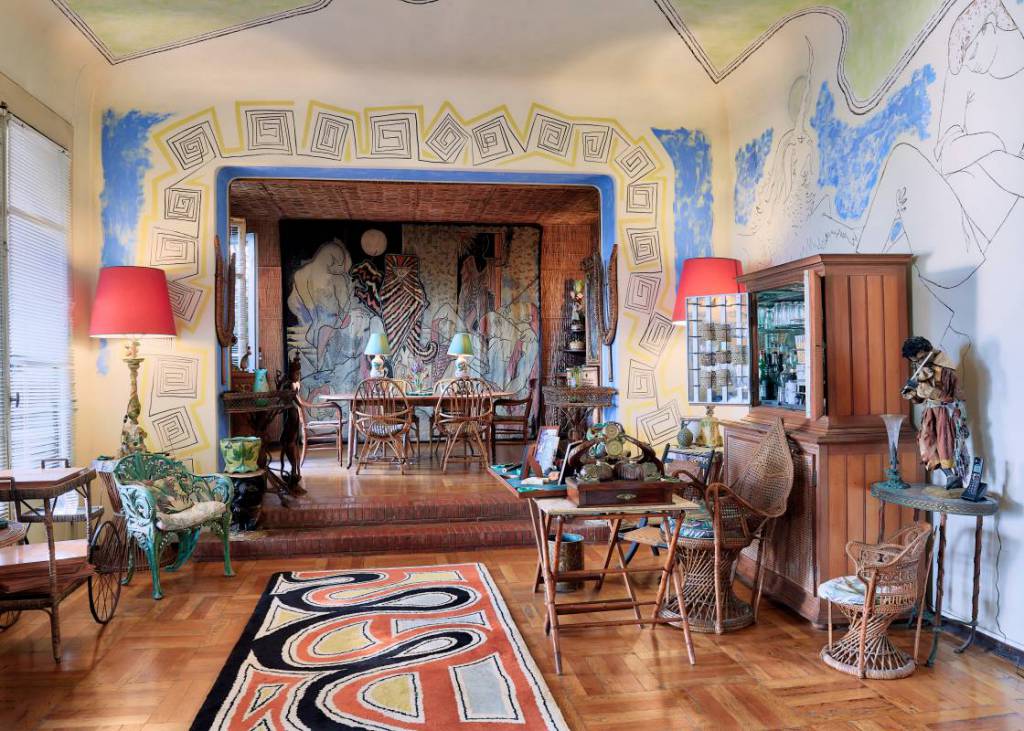
«The Lord our God slew him by the hand of a woman»
According to the Bible Encyclopedia of Archimandrite Nicephorus, it happened in 589 BC. King Nebuchadnezzar, defeating Arfaksad, sends his comrade-in-arms and experienced commander Holofernes to curb the people in the west of Assyria. Along the way, having reached the Jewish lands, Holofernes stops in a mountain village of Bethulia. Judith, a young woman from the village, puts on beautiful clothes, aromatic oils and, putting her faith in a higher power, goes to the enemy camp, where she spends three nights seducing Holofernes. On the fourth night, when the enemy falls asleep, she decapitates him. «And Lord our God slew him by the hand of a woman» (Old Testament, Judith, 13: 15–16).
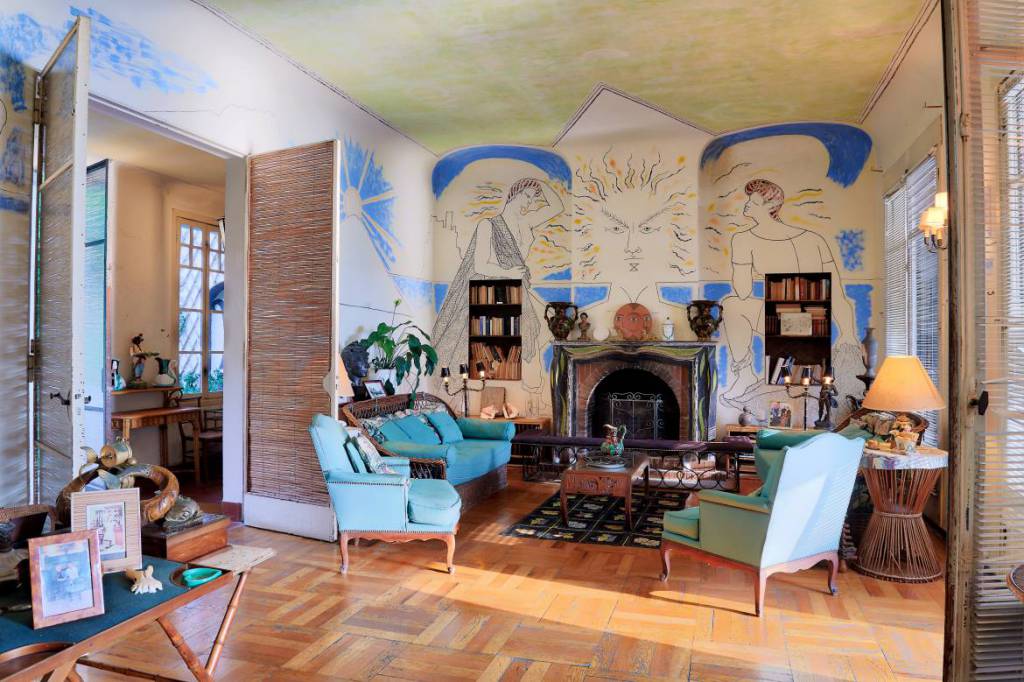
Soft shades, echoing the turquoise, Francine’s favorite colour, lull and distract attention from the plot of the terrible story. Here, in the dining room of the villa Santo Sospir, hangs the tapestry depicting this biblical story and woven by diligent craftsmen from Aubusson. Eric Marteau, the permanent caretaker of the villa, draws our attention to a woman in a chiton with the face of Cocteau himself. Did Cocteau give tribute to the illustrious Swiss, Carl Jung, with his new-fangled theories about gender distortions and dream interpretations? Or, is this a hint to another version of the biblical tale, in which Holofernes is killed by his soldier disguised as a servant? Or, Holofernes, with his judgement clouded by wine, not being able to have intimate relations with Judith. He neglects the woman for the sake of alcohol, and in this, Freud (idolized by Cocteau) perceives a special connotation, describing the female Judith complex. With the rejection of the woman and her anger illustrated on the tapestry, Jean seems to be punishing himself and asking for forgiveness from Francine, as he could not offer her his whole heart, where along with the attraction to the female body, there was also a fierce passion for the young men.
A sacred sigh of Musagète
Mark Thule Cicero writes in his treatise On the Nature of the Gods (III. 57): «The most ancient of the Apollos is the one whom I stated just before to be the son of Vulcan and the guardian of Athens. The second is the son of Corybas, and was born in Crete; he is said to have fought with Jupiter himself for the mastery of the island. The third is the son of the third Jupiter and Latona. This is the Apollo who tradition says came to Delphi from the island of the Hyperboreans. The fourth is the Arcadian Apollo, who was called Nomios by the Arcadians, as being their traditional lawgiver».
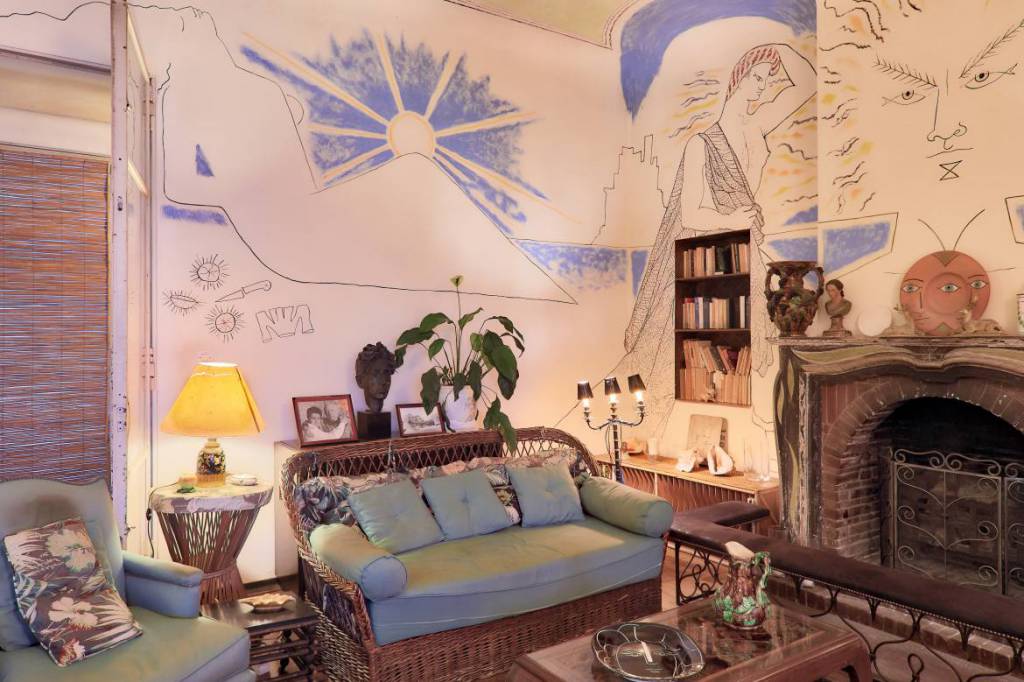
Delphic Apollo, the guardian of Athens, whose Pythias (women oracles) has opened for centuries the secrets of the future to thousands of pilgrims, is depicted above the fireplace in the living room of Santo Sospir. He seemed to be dissatisfied with something, as if he was taken by surprise, sighing over some heavy loss (the name Santo Sospir means «sacred sigh»). Or maybe it was Cocteau himself, tired of the recent filming of «Terrible Children», where he entered into a desperate fight and contest, pitted against the iron will of the director Jean-Pierre Grumbach, famous in the world of cinema as Melville.
Hardened by «Operation Dragoon» of Southern France, which took place in August 1944, with the purpose of landing of Allied troops on the Côte d’Azur, in the area between Toulon and Cannes, Melville seemed to resort to hand-to-hand combat on the set as well, not allowing Cocteau to interfere in the screen version of his own work.
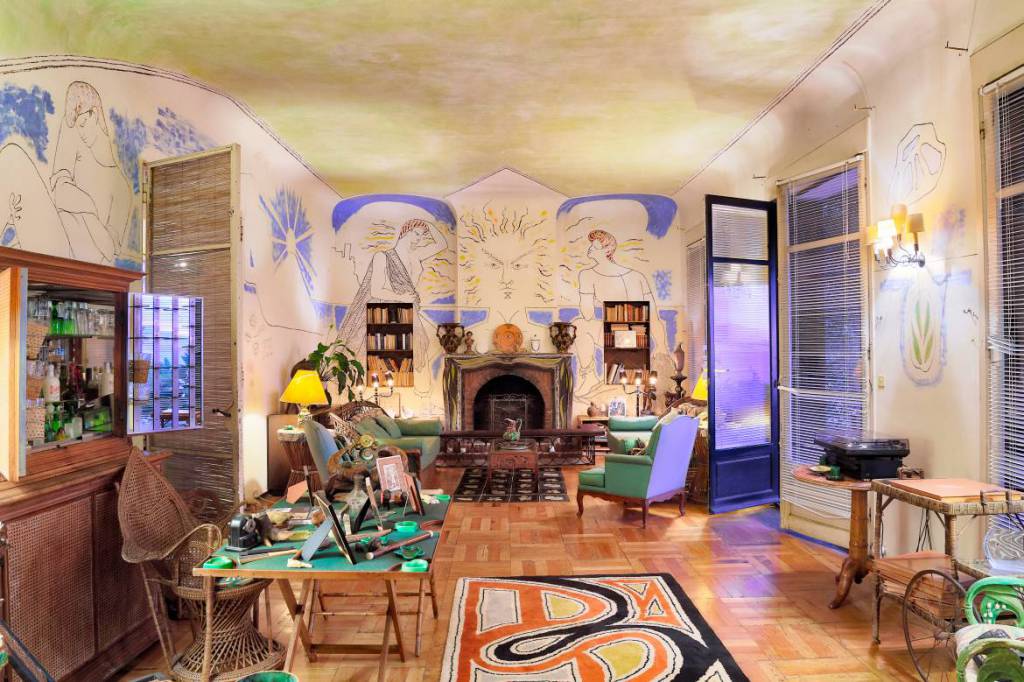
Musagète, «Lord of the Muses» (as Apollo is alternatively called), looks at the guests of the Villa Santo Sospir, frowning with his eyebrows and conversing like an oracle with his own creator and inspiring the weary Jean to believe in the future. Cocteau is perplexed, but fishermen of Villefranche, frightened with such a sudden proximity to a celestial being, help him to regain his faith in Musagète’s Muses. Their tanned bodies whisper about the coziness of simple earthly delights, saving Apollo-Jean from his overwhelming sadness, while he was looking for warmth and love in the clouds of symbolism.
«Unreasonable and Talentless Beings»
As we go down to the bedroom of the villa Santo Sospir, we meet Diana and Actaeon, the next participants in the game of Jean Cocteau. Actaeon is incarnated from the famous actor Jean Marais, Cocteau’s friend and lover. Actaeon, trained by the immortal centaur Chiron, was a hunter. Once in his wanderings, he came upon a river bank, where Diana-Artemis, the virgin goddess of childbirth and women, was bathing.
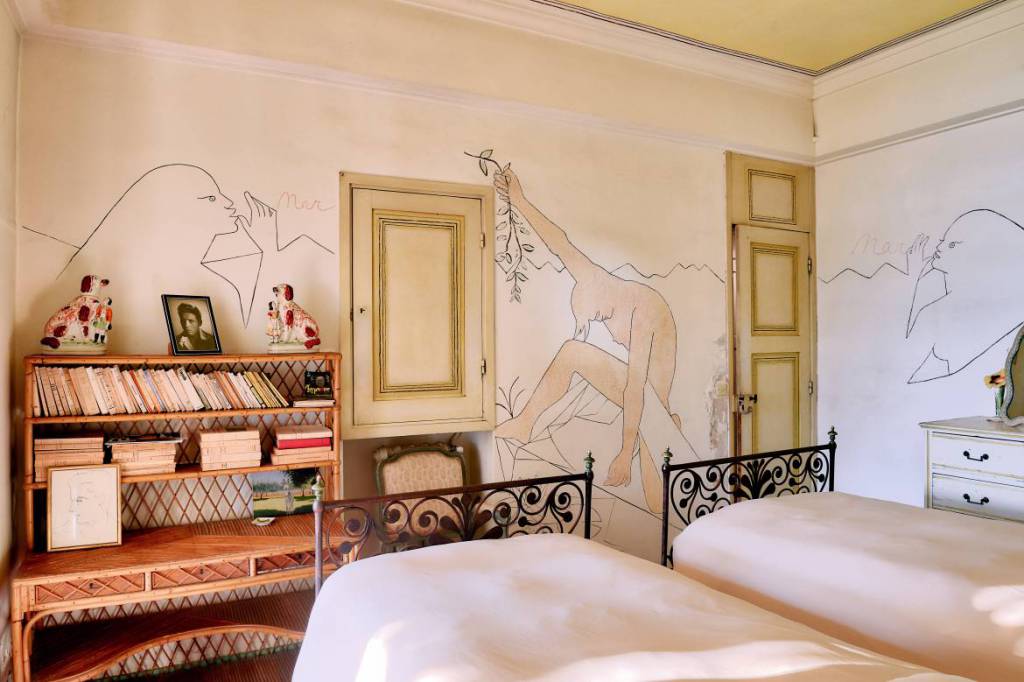
Enraged by the hunter’s gaze, Artemis turns him into a deer, and 50 hunting dogs of Actaeon tear the poor man apart. Someone Appolodor (the namesake of a famous philosopher living in the 2nd century BC) mentions in his work that most of all he feels sorry for the dogs who so absurdly lost their beloved master. Celestials also sympathized with the unfortunate animals and took them to heaven, where they were placed in the form of Canis Major and Canis Minor constellations.
Love is reproach and reprisal; it is a justification and judgement. «The ethics of new love, opposing the tags and labels», with these words, uttered after the inauguration of Les Six, a group of French avant-garde composers inspired by famous Erik Satie, Jean characterized the sacred altar of his art and passion.
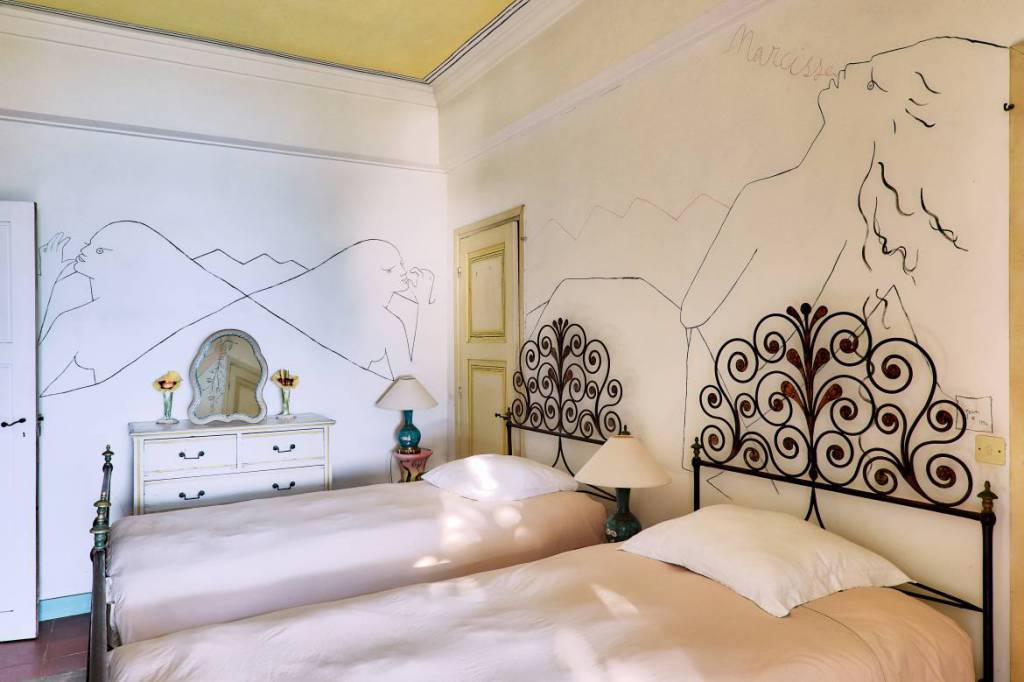
Jean Marais, echoing his beloved friend, reflects on the pages of his book «Histoires de ma vie»: «Every day invalids are born, including the sick, unreasoning and mediocre creatures. Others are perfectly healthy, beautiful, gifted. Soon we will reproach bad men for being bad, criminals — for their crime. Can the hunchback straighten up? An evil person also cannot become good, unless one has the gift of judging and correcting oneself. But this power if he had it would be given to him before birth; he cannot acquire it if he does not have this gift». They met in 1937, at the Paris Atelier Theater, during the production of Cocteau’s play «King Oedipus», and remained tender friends for the rest of their lives. And the dogs of Actaeon, the grandson of Chronos, unrelenting god of time, sought in vain to rip their love to shreds.
«Madame Eurydice will return from Hell»
Orpheus and his lyre is another very important character on the walls of Santo Sospir and in the life of Jean Cocteau (but instead of his lyre, Orpheus, placed in the fresco of the villa, holds a traditional bread of the Côte d’Azur). According to Herodotus, there were two Orpheus in history. The first is the son of Oeagrus, the lord of the river of the same name in Thrace, and Calliope, the muse of poetry, science and philosophy. The great Russian philosopher and historian Aleksei Fedorovich Losev says that Calliope gave birth to Homer himself from Apollo, so that the first Orpheus and Homer turn out to be brothers in a certain sense.

According to Herodotus, the second Orpheus lived much later, and by profession and vocation he was an Argonaut, sailing to the coast of the Black Sea, to Colchis, together with his fifty brothers in search of the golden fleece of the magic lamb. However, the mention of Orpheus as a singer with a lyre on the ship «Argo» built for the Argonauts by Athena herself, casts doubt on the version of Herodotus and suggests that there was no second Orpheus, but just in his youth the one and only Orpheus indulged in sea voyages and became an Argonaut with full rights.
The legend is well-known: Orpheus falls in love with the forest nymph Eurydice. Charmed by his divine singing, she wishes to marry him. Alas, beauty may save the world, but not marriage. Aristaeus, god of bee-keeping and rural arts and practices, distraught with passion chases Eurydice. Running away from him, Eurydice steps on a poisonous snake and dies. Orpheus, desperate to get his wife back, takes his lyre and travels to the underworld, where Hades and Persephone, Death’s duo, agree to return Eurydice with one condition: Orpheus should not look at her until they both reach the upper world. When they are about to leave the kingdom of the dead, Orpheus, unrestrained from temptation, turns around to see if Eurydice is following him. The curse is triggered, and Orpheus remains alone and faithful to Eurydice for the rest of his life. He was eventually torn to pieces by women with whom he refused to be intimate.
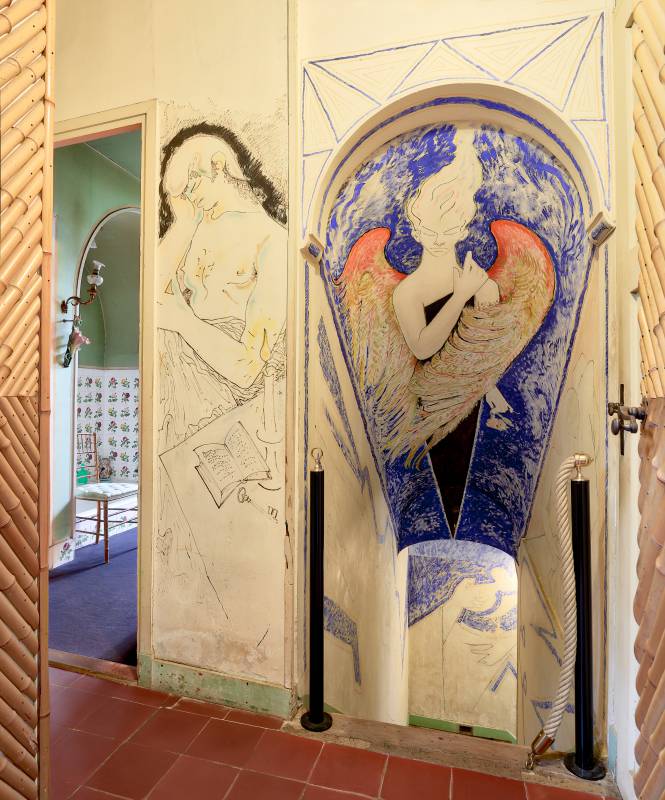
Let’s go even further to see how Ovid describes Orpheus’ loyalty in his «Metamorphoses»:
He refused all nourishment and fed himself
on his own tears and mental pain. Complaining
that the gods of Erebus were heartless,
he moved away to high Mount Rhodope
and windswept Haemus.
The Titan sun god
had three times come to watery Pisces,
finishing off the year, and in that time
Orpheus had refused to love a woman,
either because his love had ended badly
or because he’d made a promise not to.
But many women, passionate for him,
wished to wed the poet and were upset
when he declined. But Orpheus transferred
his love to tender boys and was the first
among the Thracian people to enjoy
their brief spring years and early flowering,
before they were young men. (Book X, 120–130)
Should we look for the causes of Jean’s bisexuality in his break with Natalya Pavlovna after three years of relationship, which lasted from 1932 to 1934? They broke up after the death of their unborn baby. Orpheus could not keep Eurydice — in that fateful minute the flame of passion for a woman extinguished. The fate of Jean, and before him Orpheus, torn to pieces by the Thracian Menads for his altered sexuality, was determined by celestial forces wishing to shelter the great singer and his lyre in the sky, and on Earth — the master of pauses and omissions, barely noticeable lines of fate, written out by Jean on the «terrible» (in his own words) white walls of the Villa Santo Sospir.
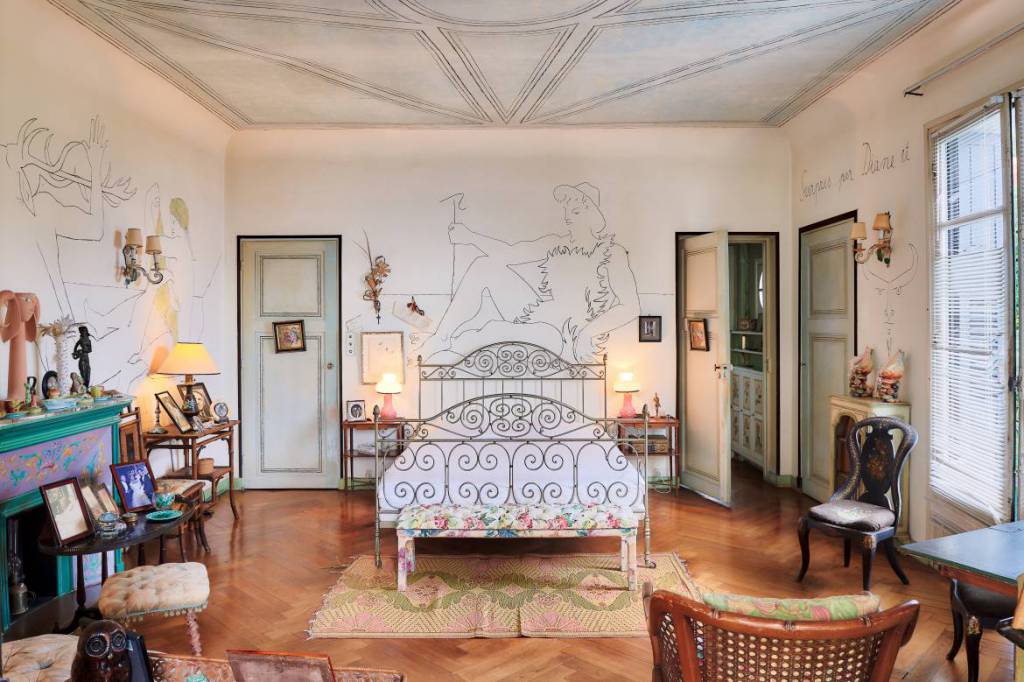
His Orpheus is a rebel straight-thinking Dadaist with a devastated heart. Having created the play «Orphée» in 1926, with a horse playing one of the main roles, Cocteau seems to predict the emotional and artistic history of the 20th century — from the search for new sources of inspiration to the mutilation of the fundamentals of being. And the head of Orpheus torn off by Thracian women is attached to the body, the incarnation of earthly joys, in another reality, leaving on Earth the bald conjectures about the laws of the Universe and the «dead horse» of the descriptive quality of art. The artists of that time could only exclaim, like Orpheus in his play: «Madame Eurydice will return from Hell!»
«He is sleeping in the nude…» («II dort… Il dort nu»)
When you are a 9-year-old boy and your father commits suicide (that happened to little Jean), in the future you want to prevent the tragedy for all the boys you meet. Ephebes, young men aged less than 20, were the object of close attention and tender passion of Jean until his very death in October 1963, upon the death of Edith Piaf. After he had learned about the tragic event, Jean reached for the phone and had a cerebral hemorrhage with blood foaming at the mouth… The ambulance arrived too late. In this difficult moment, he had his lover next to him, as well as his adoptive son Edouard Dermit, who inherited the fortune of the great artist. Edouard also has his place on the walls of Santo Sospir, where he incarnates Narcissus.

Ovid, mentioned earlier, had doubts about the official version of the story of Narcissus and his reflection. Ovid believed that there was no reflection, and Narcissus, in love with his twin sister, died from anguish after she had passed away. In any case, Narcissus, in love with the version of himself (reflection or sister) is the last symbol of death in the work and life of Cocteau. The love of self, the great and fragile «everything», devoured by the curse of the gods by the empty «nothing», which perplexed Jean when he first saw the white walls of the villa Santo Sospir.
«She died as if burned by a blaze of glory», Cocteau exclaimed, after he learned about Piaf’s death. According to his will, he was supposed to be buried in the garden of his own house, but the local authorities did not allow it, so he was buried in the courtyard of the Chapelle Saint-Blaise des Simples in Milly. A few months later, on April 24, 1964, the body of Jean Cocteau was transferred to a small chapel.
Quelquefois je m’endors. Soudain je me réveille
Le mur s’ouvre sur la merveille
De mon bel enfant endormi.
Je pense: on ne dort pas. On rêve à son ami
On lui glisse des vers sous la porte mal close
Il dort… Il dort nu sur sa grande main rose
Il dort : où le sommeil enlève-t-il ses pas?
Il dort et c’est divin que je ne dorme pas
Que je m’échappe à ce monde astucieux du rêve
Et je sors une jambe et l’autre, je me lève
Je marche vers la table où je chante debout
Mon enfant endormi circule Dieu sait où
C’est à moi de veiller, d’être la sentinelle
Du bonheur que la vie accepte au milieu d’elle
(Jean Cocteau, Ma nuit)
Until recently, the villa of Santo Sospir was owned by Francine’s daughter. A few years ago it was purchased by the wealthy Russian family of the businessman Ilya Melia. At the end of 2018 the villa was closed for two years for restoration.
We decided to revive the frescoes of the Villa Santo Spospir with the help of ballet dancers and offer our version to you, dear readers.


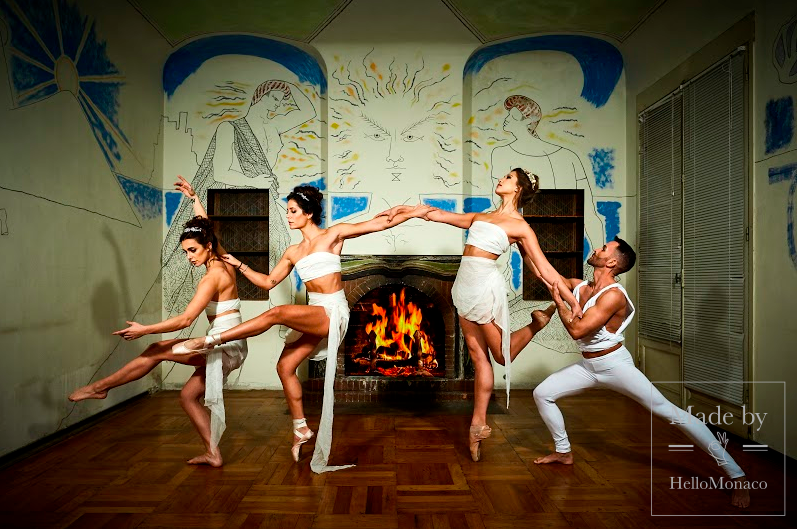
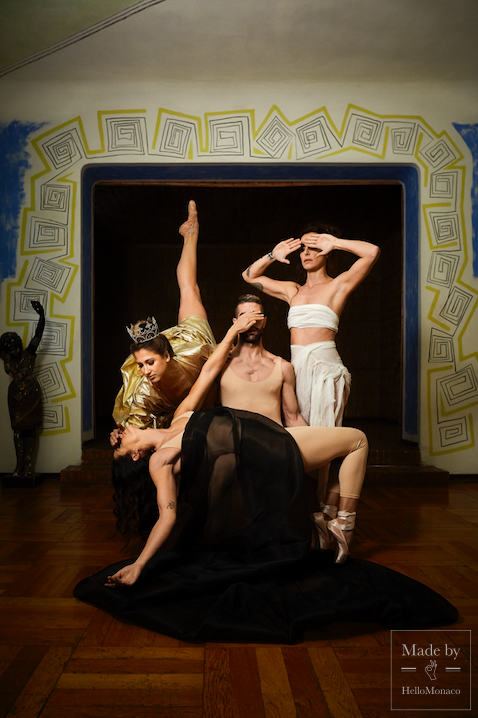
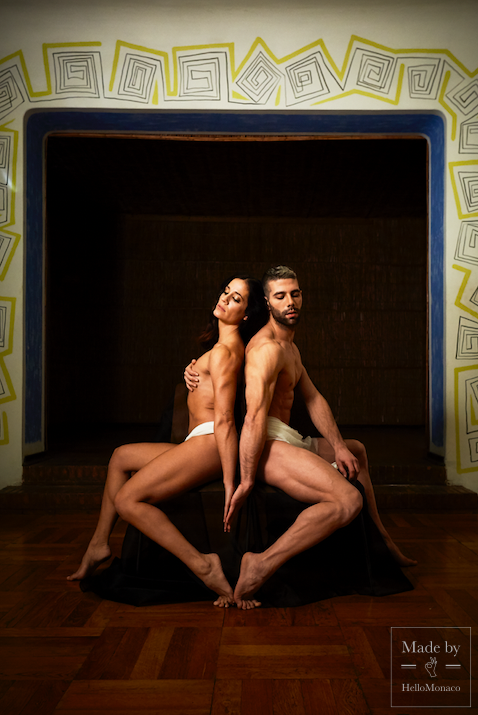
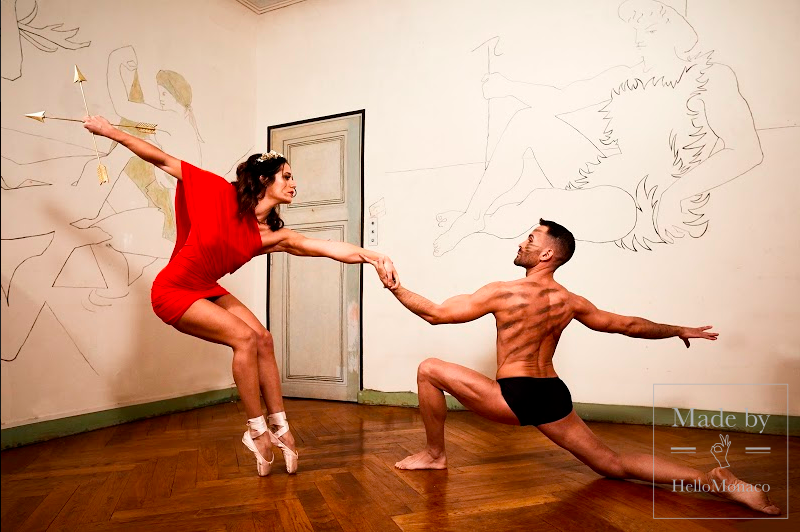
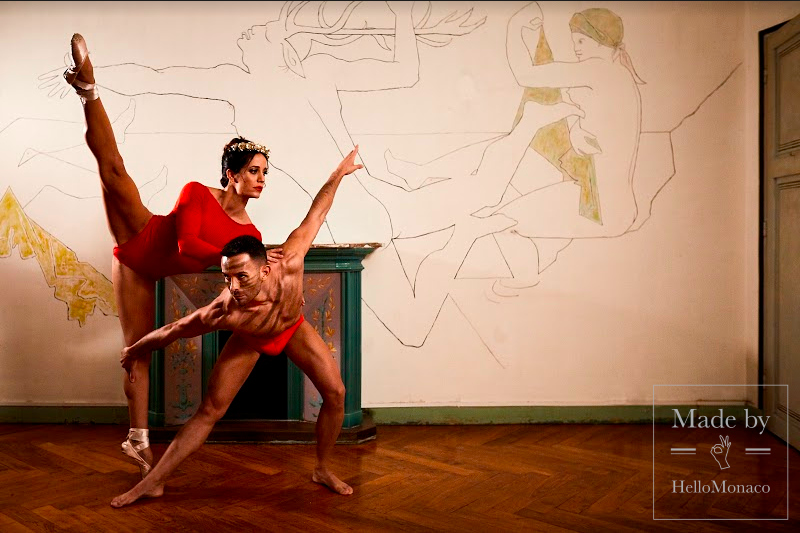
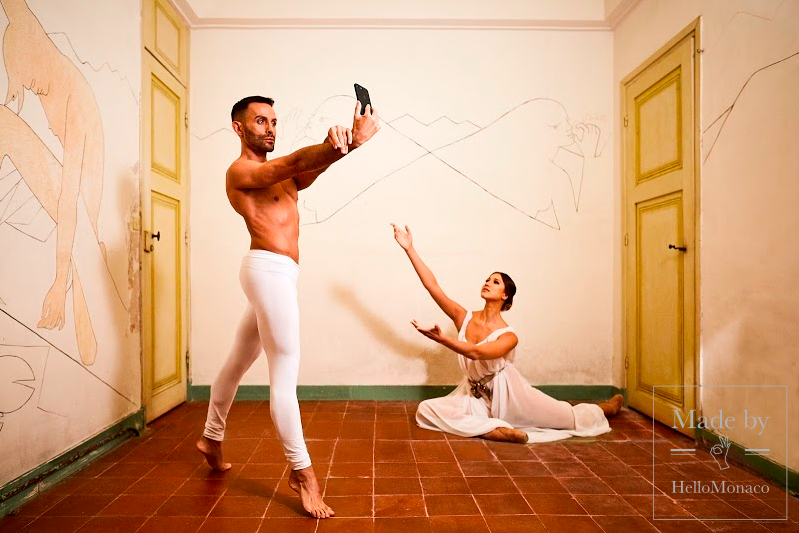
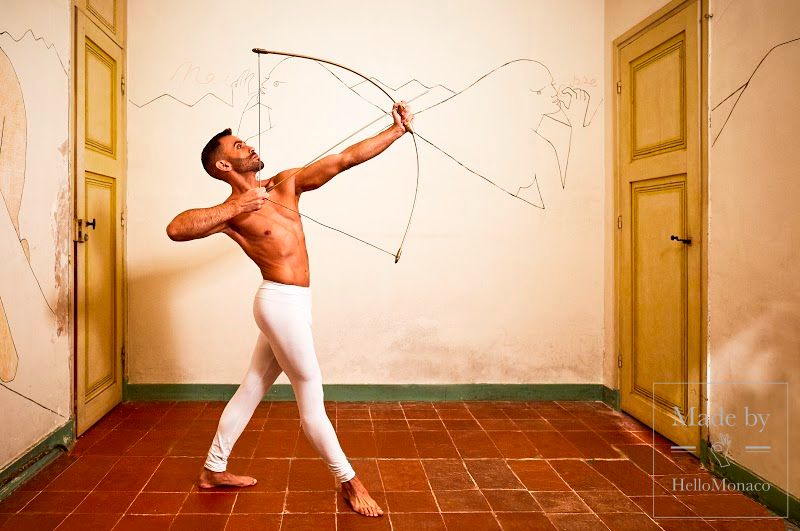

CREDITS AND SPECIAL THANKS TO:
Dancers and performers:
Martina Sweety Cancellara
Liisa Hamalainen
Valentina Tosato
Tommaso Murgia
Hermes Migliavacca
Costume Designer: Emilia Valentina Delena
Photographer: Kevin Leinster
Make Up Artist: Joana Manangan Ronquillo
Make Up Artist: Olga Mashurova
Producer: Olga Taran
Coordinator: Nancy Caburnay






